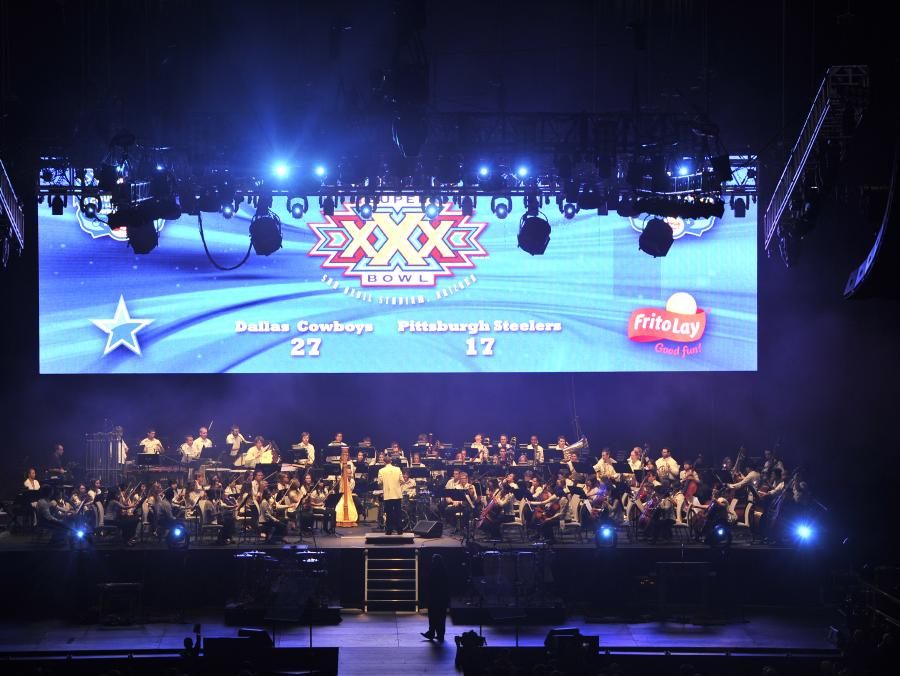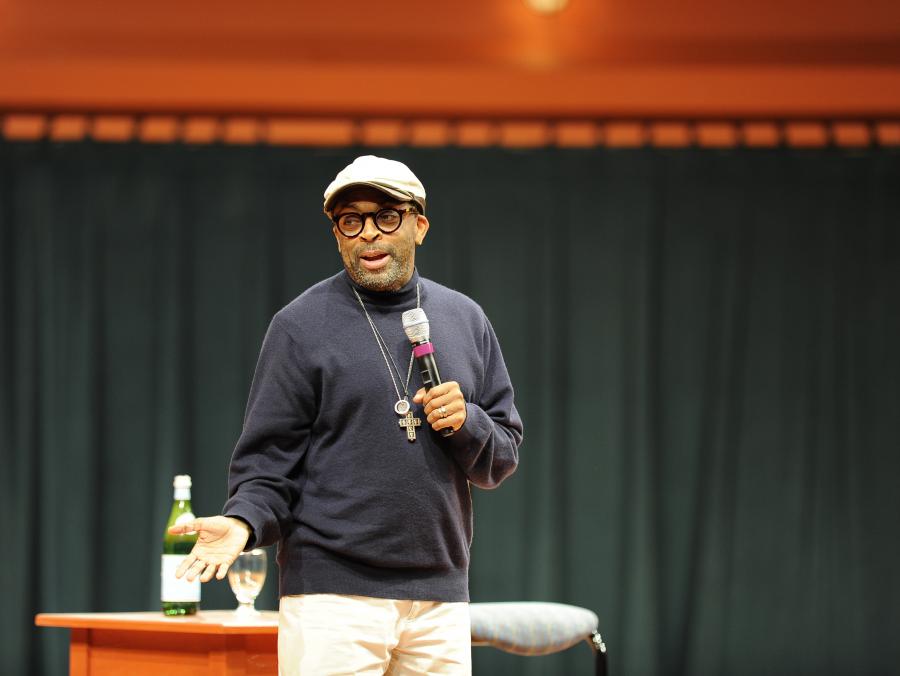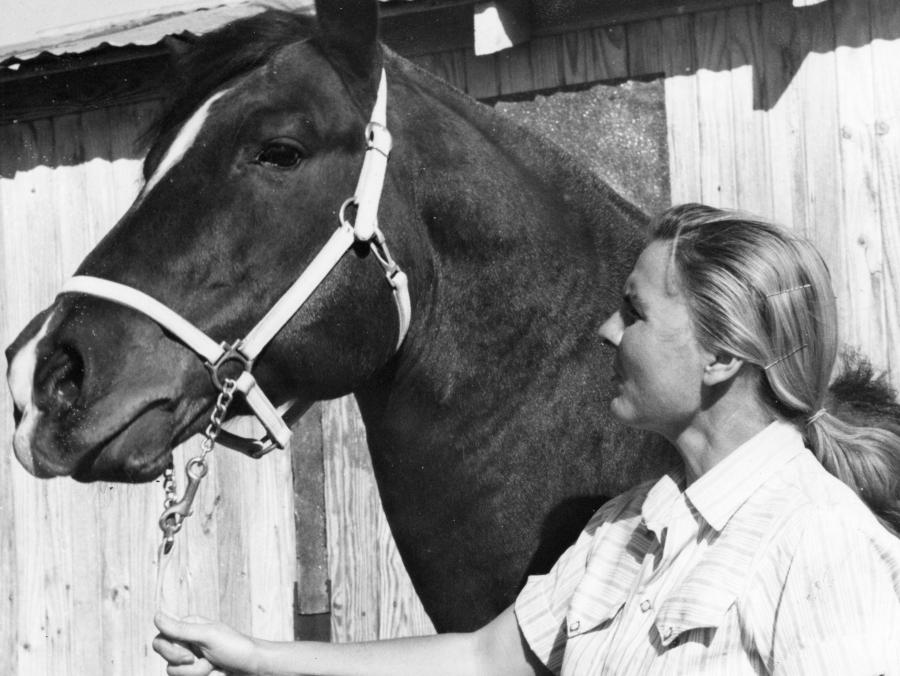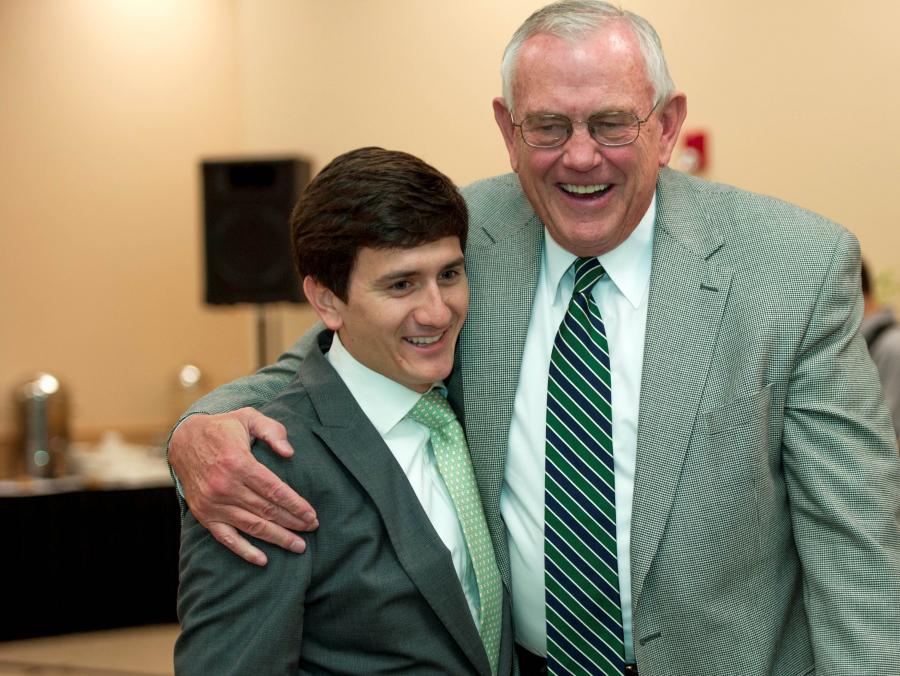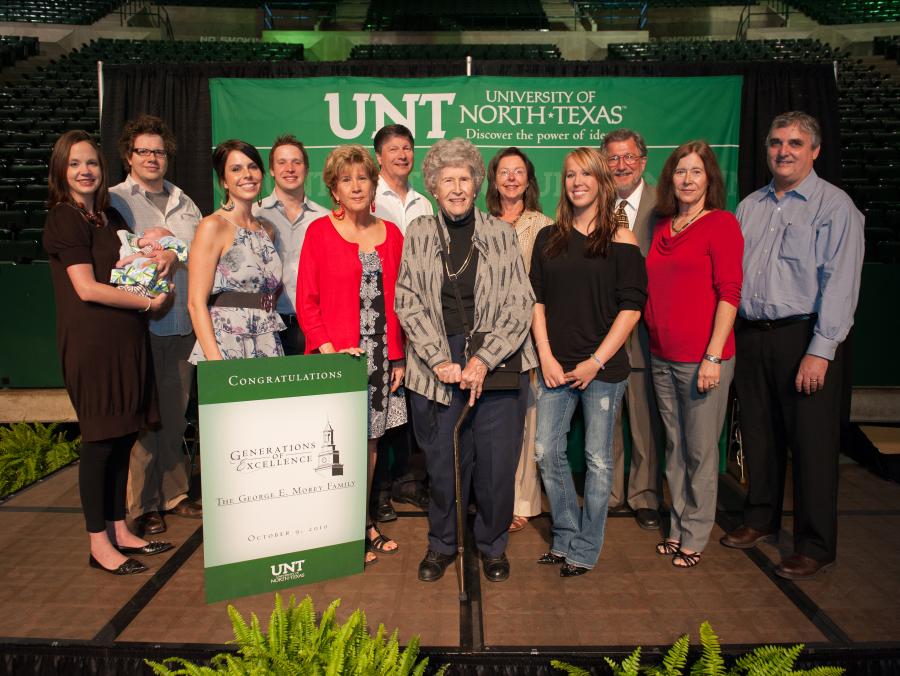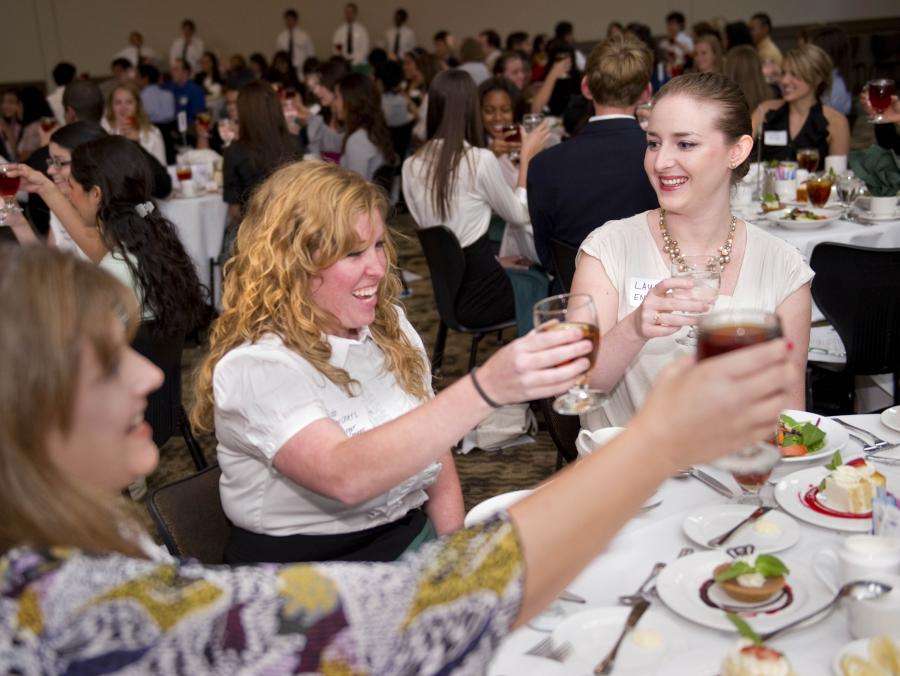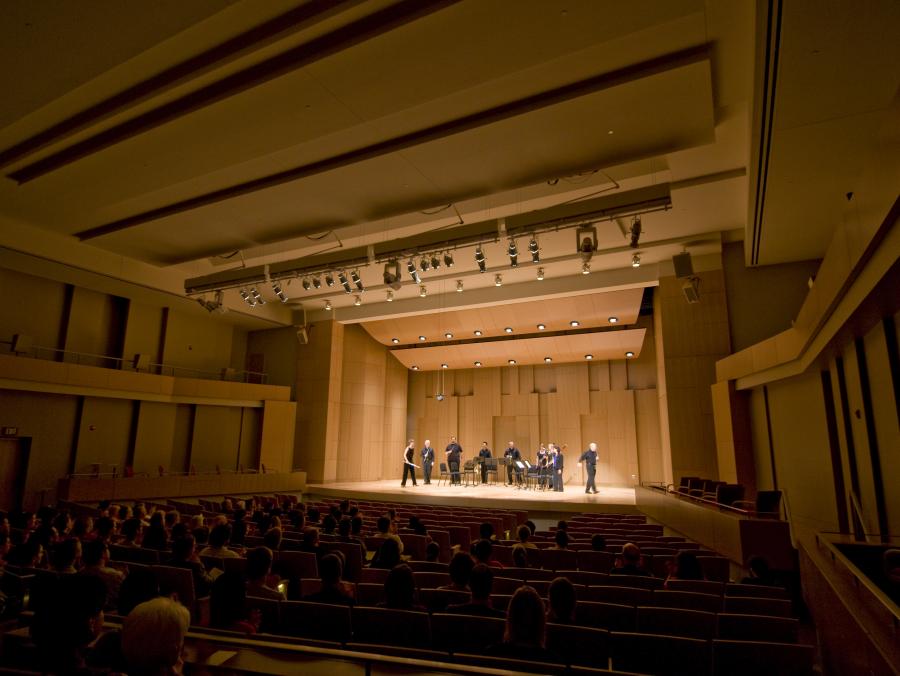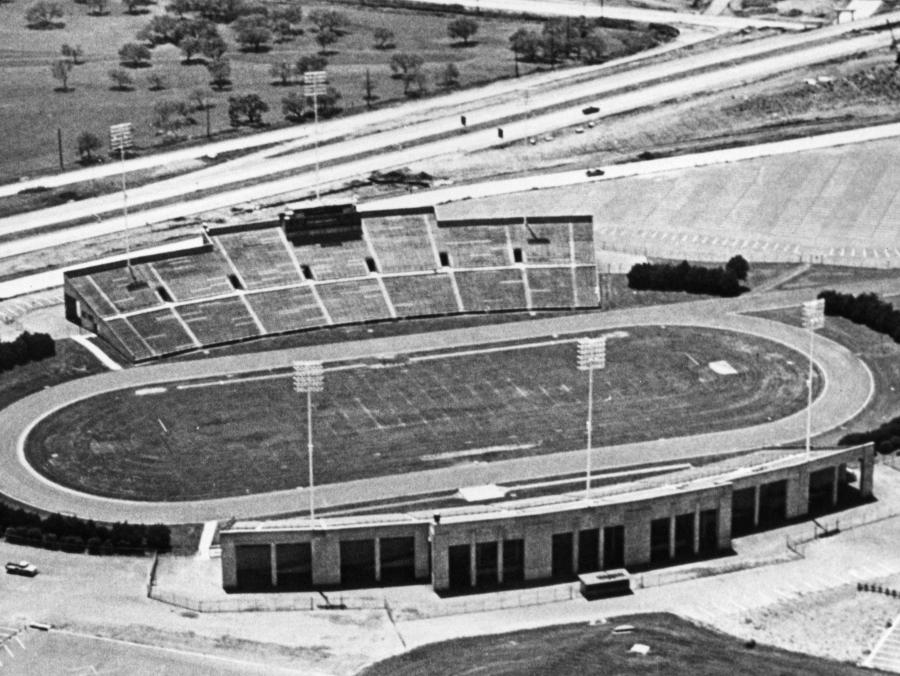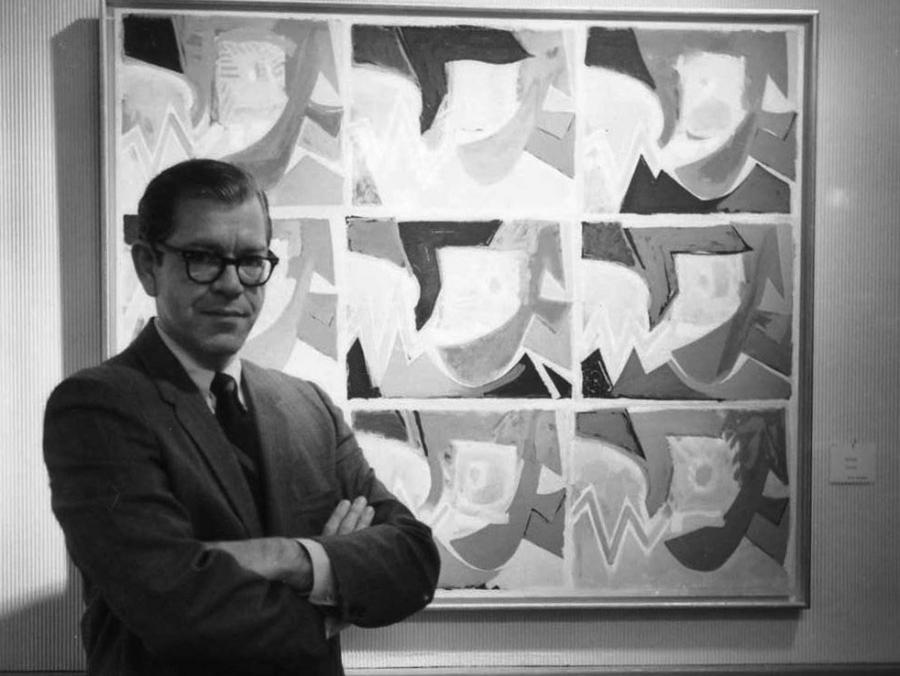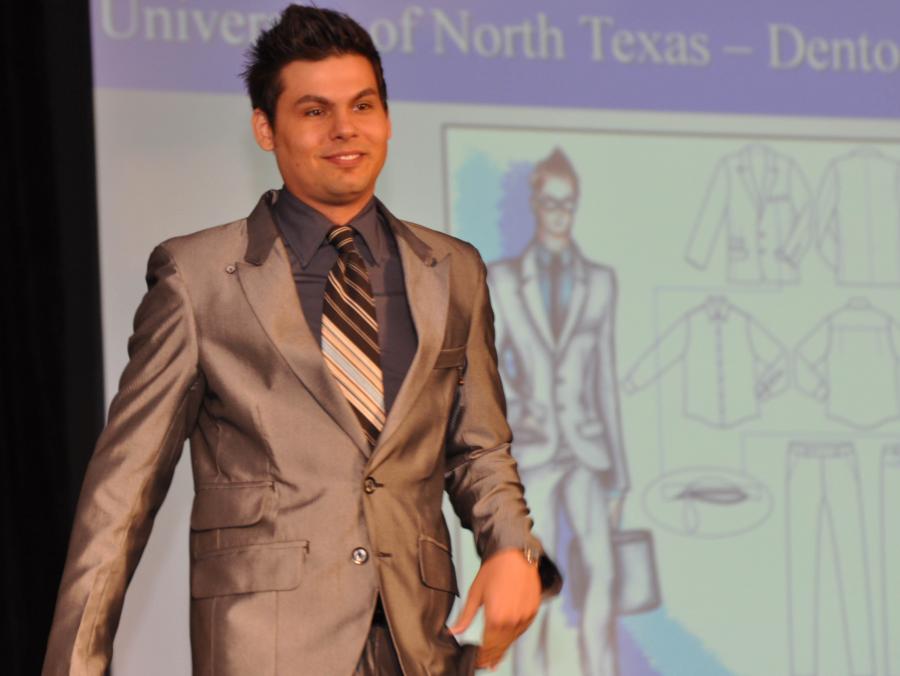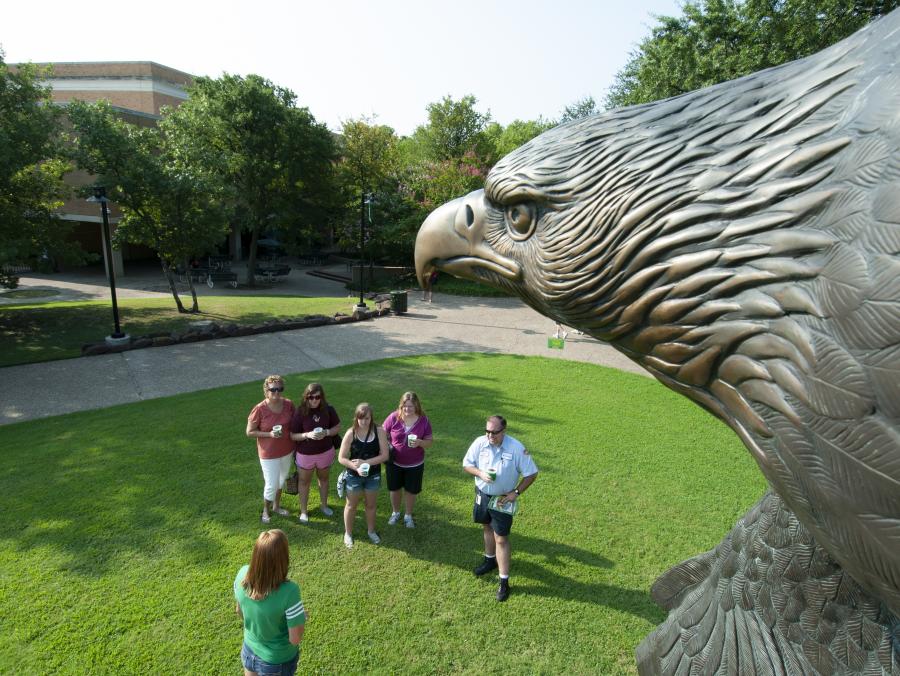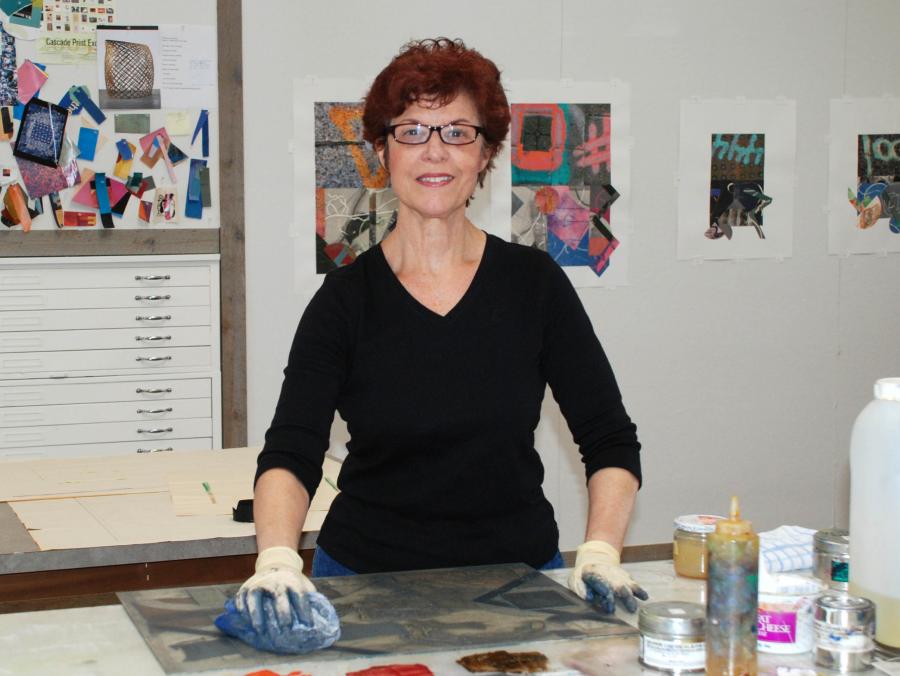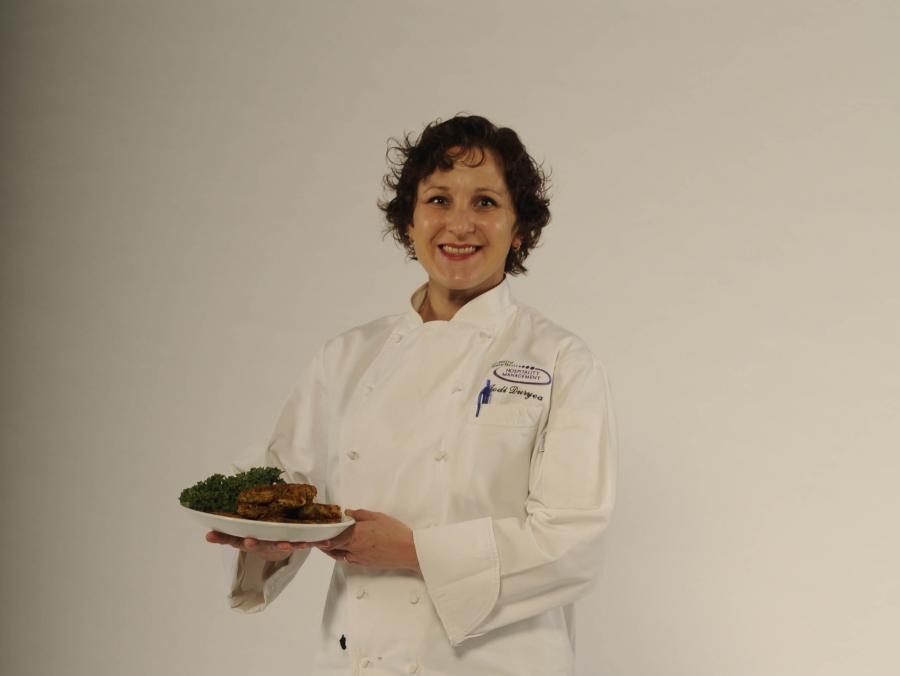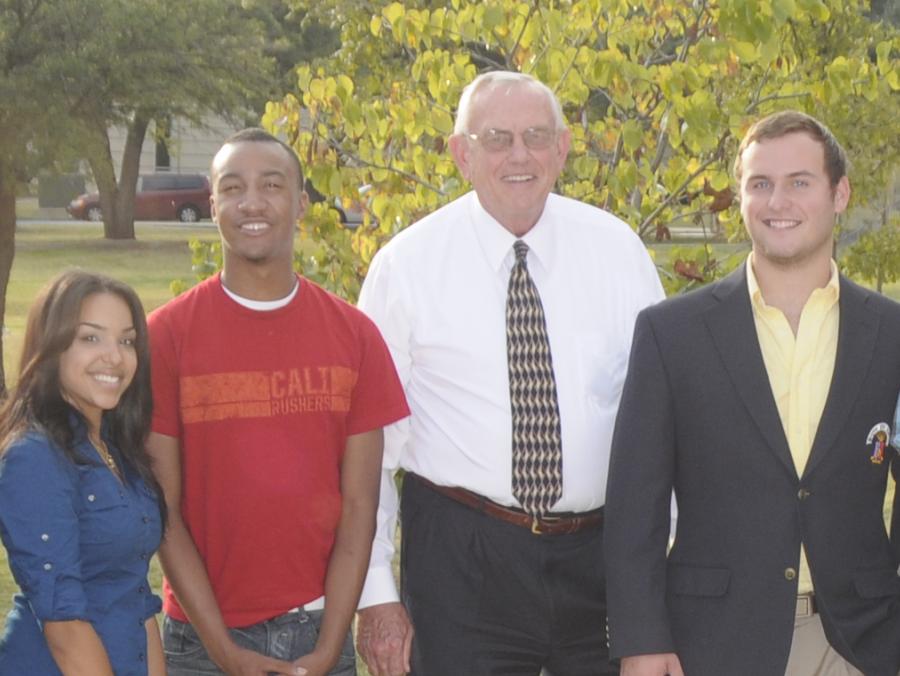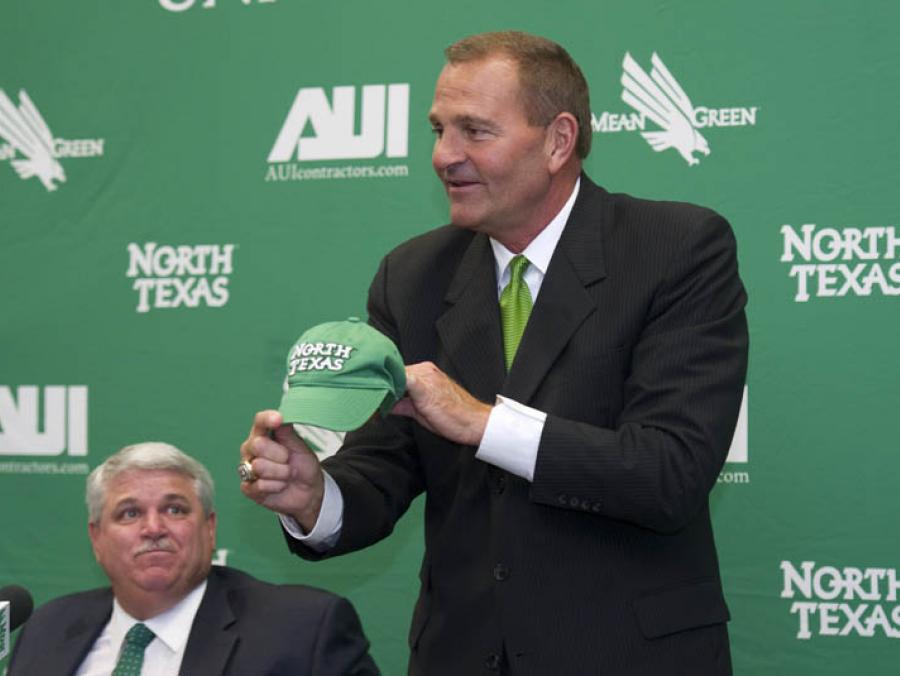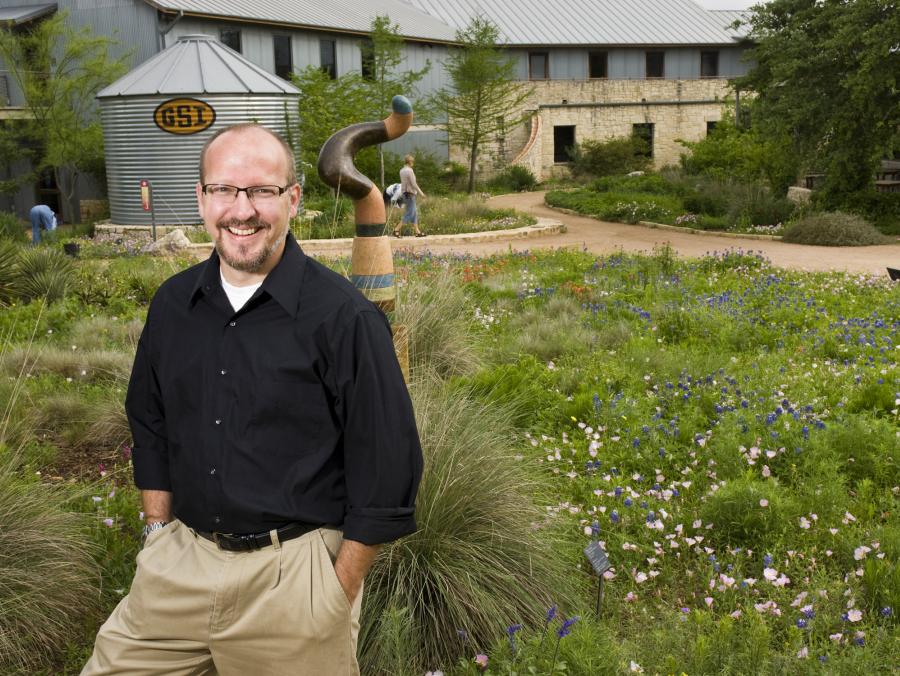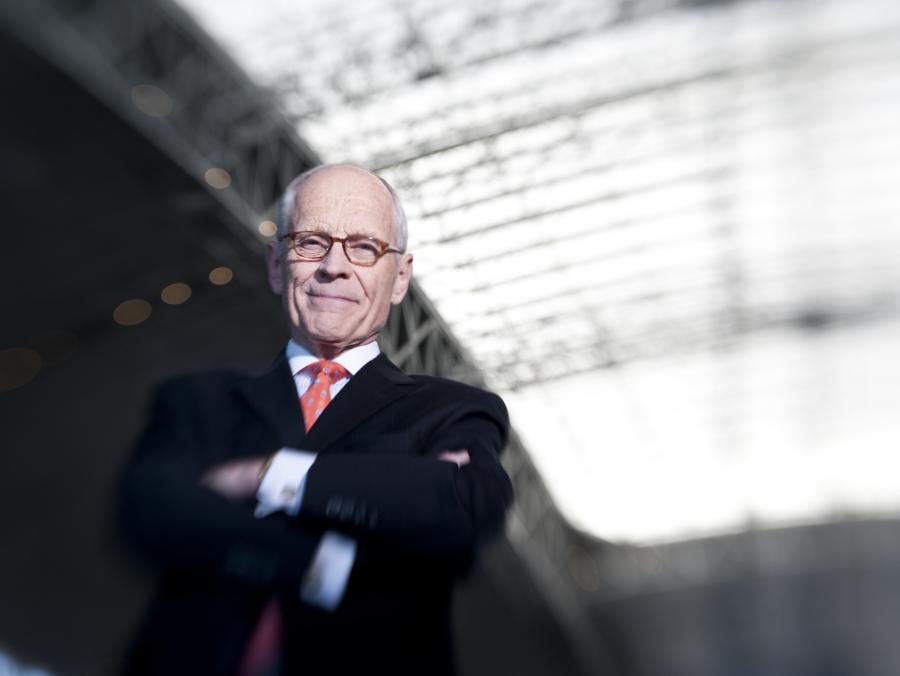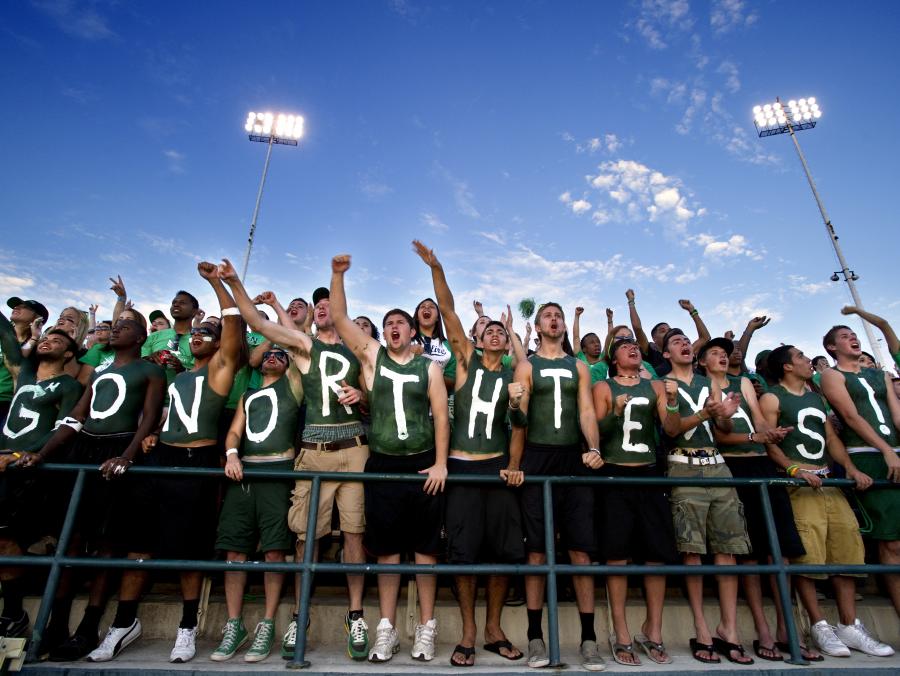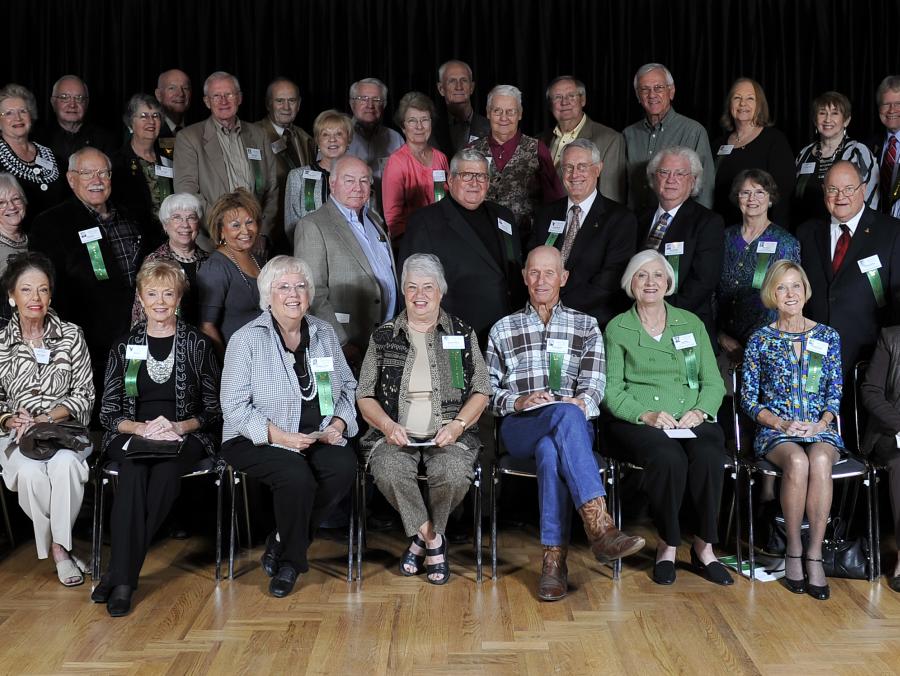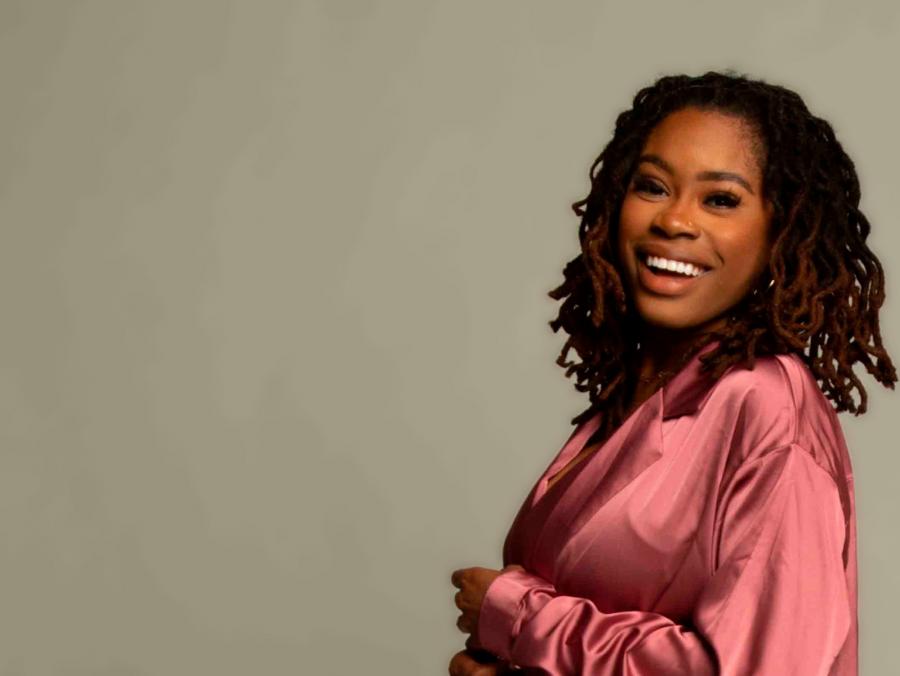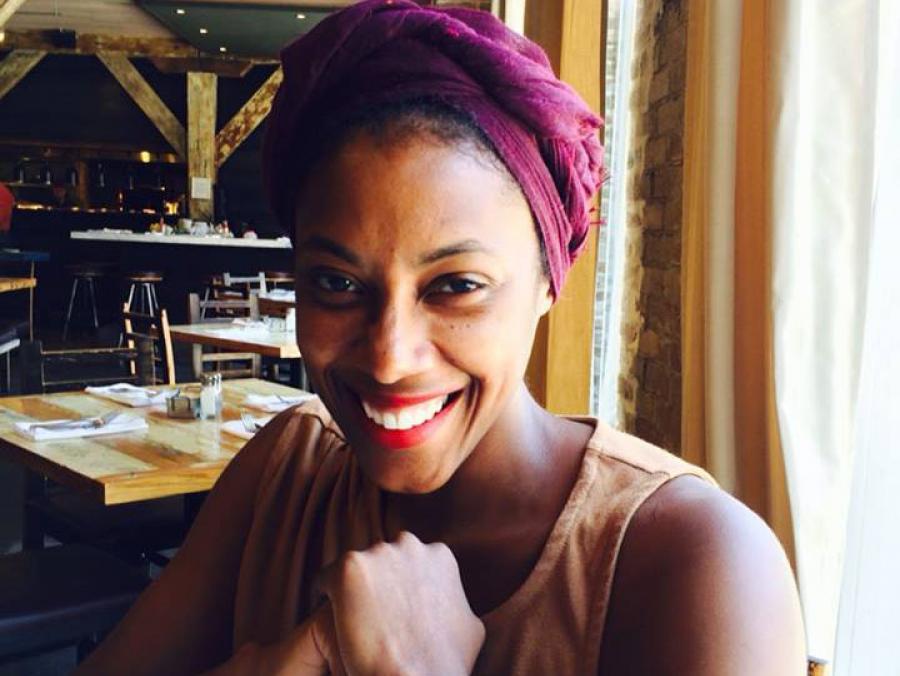Cynthia Izaguirre (’97), co-anchor of News 8 Daybreak on WFAA-TV/Channel 8 in Dallas, makes it her mission to tell inspiring stories about people helping other people.
In her “Our Neighbor” segment, Izaguirre has profiled a 23-year-old with cerebral palsy who assists occupational therapists at a nursing home, a high school graduating class that raised money to pay the medical expenses of a classmate who died, and grandmothers who use their limited retirement funds to sew pillows for troops flying off to war zones.
“I love highlighting the incredible people in North Texas who volunteer their time. They make me want to be a better person,” says Izaguirre, who honed her storytelling skills in UNT’s broadcast journalism program.
“My professors always told us it’s the human interest stories that grab the ear and the heart, because chances are we can all somehow relate.”
Compelling stories
Training students to create compelling stories while informing society with truth and factual accuracy has been a goal of UNT’s journalism programs since C.E. Shuford founded the journalism department in 1945.
Graduates of the department, which became the Frank W. and Sue Mayborn School of Journalism in September 2009, include several Pulitzer Prize winners, such as Leona Allen (’86), deputy managing editor of The Dallas Morning News, who won the prize for her reports on local racial attitudes while working at the Akron Beacon Journal, and the late Howard Swindle (’68), who led The Dallas Morning News to three Pulitzers as an editor focusing on issues such as racial segregation and police abuse.
UNT's journalism alumni
Find out more about journalism alumni and their work.
Today’s journalism graduates are faced with the challenges of keeping up with rapidly changing technologies while still telling stories that draw readers in. As newspapers’ online counterparts grow and a web presence is a corporate necessity, journalists and public relations professionals now must know how to write for the web, shoot photos and create videos.
Function, not form
UNT’s journalism faculty members are training students to adapt to these changes with undergraduate courses such as multimedia storytelling, visual news storytelling and online journalism. This spring, the Mayborn School will offer a course on the use of Twitter, Facebook and other social media sites. And the Mayborn Graduate Institute, which houses the only nationally accredited journalism master’s degree program in Texas, offers a course on blogs and other new areas of communication.
Faculty members say there is crossover between the school’s two undergraduate departments — news and strategic communications — and they encourage students to take courses from both.
“Our students have learned that there’s not just one way to tell a story and convey information; instead, they know to use an integrated approach by combining print with visual media, the web and social media,” says Roy Busby (’59, ’66 M.B.A.), the school’s interim associate dean and the associate director of the Mayborn Graduate Institute.
Mitch Land (’82), interim dean of the Mayborn School and director of the Mayborn Graduate Institute, describes the school as one of “function, not form.”
“Journalism is about telling stories, reporting facts and keeping readers’ attention — whether it’s a long narrative story for a printed publication, a broadcast story or a public relations campaign,” he says. “If we teach students to craft beautiful stories in copy or image, they will always have jobs.”
A larger story
Eric Gay (’90), a photographer at the Associated Press San Antonio bureau for more than 10 years, says he’s grateful he was required to report and write stories like any other undergraduate in the news/editorial journalism sequence.
Gay, a Pulitzer Prize finalist for breaking news photography for his coverage of New Orleans after Hurricane Katrina, began shooting video essays as well as still photography this year. The footage is distributed worldwide through the AP’s YouTube account.
“Even before I started creating video essays, I realized I was shooting my photos as part of a larger story, and the photos needed to go with the written story,” he says. “Thinking as a storyteller really helps you consider not just the broader view, but the details of how an event impacts people’s lives.”
Ashley Womble (’04), who became Country Living magazine’s web editor in the fall after serving as web editor for Cosmopolitan magazine, calls herself “a storyteller on the web.” She includes everything from videos and slideshows to blogs, polls and quizzes on her magazine’s website. She also regularly posts on its Twitter and Facebook accounts.
Womble, who was an arts writer, commentary editor and editor-in-chief of the North Texas Daily as a student, launched Cosmopolitan’s website after her original website, Homegurls, with tips on decorating and entertaining, received positive attention.
“The challenge of editing a website is to create a product that is different from the magazine, but still interesting to the subscribers as well as people who come to the site while surfing the web,” she says. “At UNT, I learned that editing is an ongoing process, which helps me tremendously because the website must constantly change content.”
New opportunities
Wendi Strong (’83, ’90 M.J.) is the executive vice president of corporate communications at USAA, a Fortune 500 financial services company in San Antonio. She and her staff frequently create videos about the lives of the members of the association — U.S. military personnel and their families — to encourage emotional connections between employees and those they serve.
She says that USAA is a recognized leader in the use of social media, with 100,000 Facebook followers and 10,000 followers on Twitter.
“We’re now working on an iPad application,” says Strong, who earned her undergraduate degree in psychology before pursuing a master’s in journalism.
“We were taught the power of print, graphics, video and photos as tools to help us communicate clearly,” she says. “We just didn’t know the opportunities we’d have now for distribution.”
Even veteran journalists with decades of reporting and writing are using new technology.
Cragg Hines (’67), who was a Washington, D.C., bureau chief, editorial columnist and national political writer for the Houston Chronicle, says he wrote for the Chronicle’s blog toward the end of his 35-year career — and not just political commentary. In one entry, he discussed his personal experience with the not-so-friendly skies after facing airline delays.
“Bloggers often must convince editors that just because something is breezy, it’s not going to take less time to craft,” he says.
Hines currently writes for Washingtonian, a general interest monthly about the Washington, D.C., area.
He recalls that before the Internet and other technology, more journalists had both the time and the space in newspapers for long, detailed stories.
“I spent six months working on a series for the 50th anniversary of D-Day. It appeared in the Chronicle for more than a week,” Hines says. “Today, the industry is so fast-paced that you have to negotiate for an extra five or 10 minutes of writing, not another day or week.”
Importance of narrative
Despite the immediate nature of writing for the web, the Mayborn School faculty continue to stress the value of narrative journalism for all media and genres.
Paul Knight (’06), a reporter for the Houston Press, an alternative newsweekly, notes that long-form journalism is still the focus of his work. He regularly writes magazine-length investigative pieces and profiles for the Press’ print and online versions, including a story about unintended acceleration in Toyota Priuses that was published before the topic made international headlines last spring. He also writes for the Press’ “Hair Balls” blog.
Knight credits the Mayborn School’s emphasis on narrative journalism — nonfiction writing that focuses on storytelling — for his understanding of how to keep readers engaged.
The school began focusing on narrative journalism at the graduate level in 2005, when the Mayborn Graduate Institute sponsored the first Mayborn Literary Nonfiction Conference and offered its first literary nonfiction writing class in Archer City, home of author Larry McMurtry (’58). The weeklong summer class includes attendance at the conference where students meet and take lessons from prominent storytellers such as Gay Talese, Joyce Carol Oates and Ira Glass.
Knight says attending the Archer City class, taught by George Getschow, a principal lecturer in journalism and a Pulitzer Prize finalist for a series he wrote for The Wall Street Journal, “was an eye-opening experience.”
“It changed my whole outlook on the journalism industry and what I could do with my journalism degree,” Knight says.
As the journalism industry evolves, faculty members agree the Mayborn School is growing while holding true to its commitment to accurate, compelling storytelling first.
“Our new branding slogan is ‘Your story starts here,’” Busby says. “Pop Shuford would clap his hands at what we are doing.”



